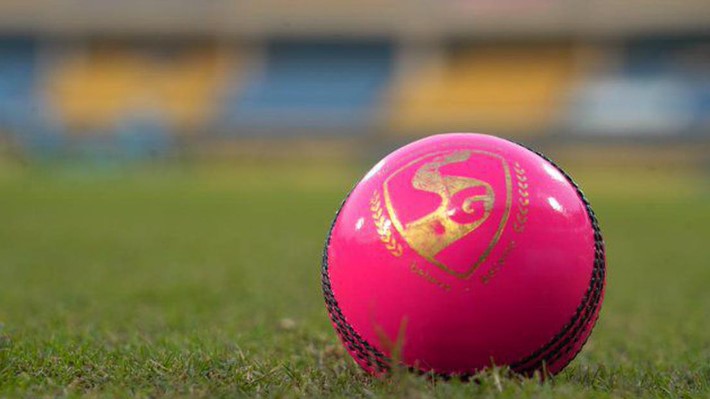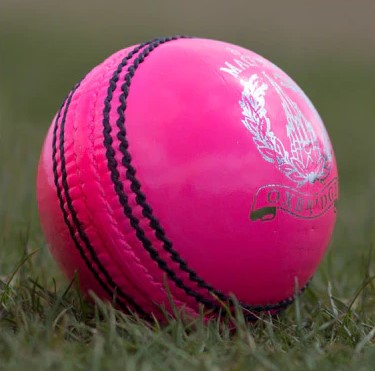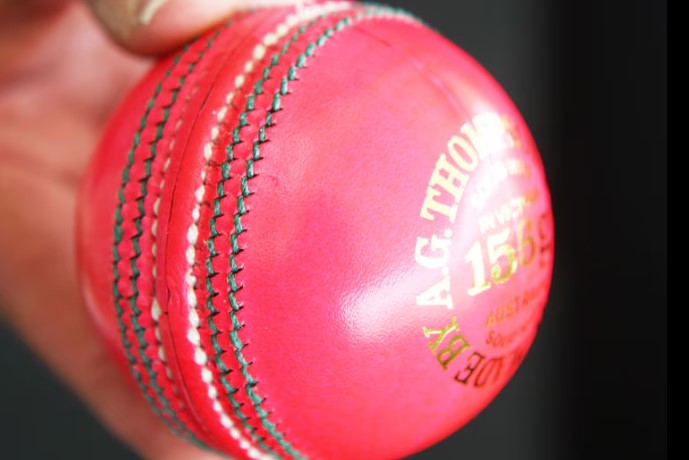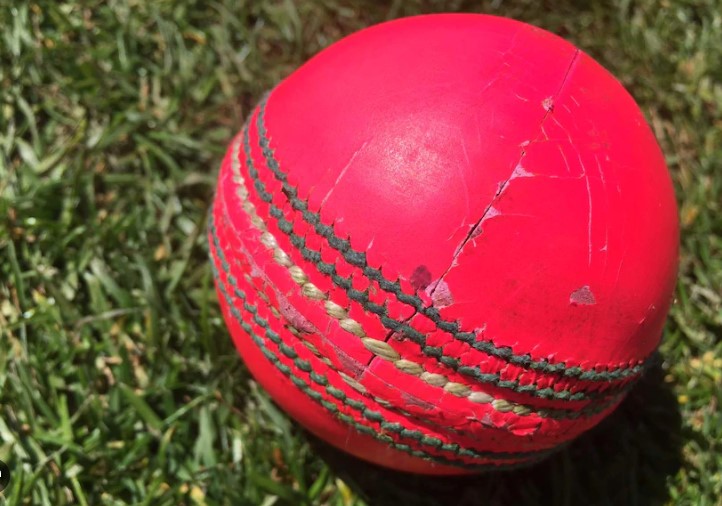Pink Ball: Test cricket, the longest and most traditional form of the game, has undergone several changes to adapt to the modern demands of players and audiences. One of the most significant changes in recent years has been the introduction of the pink ball in Test cricket. Traditionally, Test matches have been played with a red ball; however, the need for day-night matches and the challenges posed by visibility during evening hours led to the development of the pink ball.
But why did Test cricket choose the Magenta ball over other potential colors? This article delves into the scientific and practical reasoning behind the color choice and the unique characteristics that make the pink ball suitable for Test cricket.
The Evolution of the Cricket Ball

In the early days of cricket, the ball was made from a natural leather casing, and the color was often a shade of brown or white. Over time, the sport evolved, and by the late 19th century, the red cricket ball became the standard for Test cricket. The red ball was easier to see during daylight hours and offered certain advantages in terms of swing and seam movement, making it the ball of choice for long-form cricket.
However, as the popularity of day-night Test matches began to grow, the traditional red ball faced challenges. The red ball became difficult to see during artificial lighting, especially in evening sessions. This issue, along with the increasing demand for day-night Tests, led to experimentation with different colors. The solution was the introduction of the pink ball, which offered better visibility under artificial lighting without sacrificing the fundamental qualities of the red ball.
The Science Behind the Pink Ball’s Visibility
The main reason behind choosing the pink ball is its visibility in low light conditions. To understand why the Magenta ball works better than red or white balls in evening or night matches, we need to explore some basic principles of color and light.
Light and the Human Eye
The human eye has evolved to perceive certain colors more effectively under different lighting conditions. During the day, under natural sunlight, the red ball is highly visible. However, during the transition from daylight to artificial light in the evening, the red ball tends to lose its vividness due to the reduced light levels and increased contrast with the surroundings.
The Magenta color was chosen because it sits comfortably in the visible light spectrum, meaning that it stands out more clearly under artificial lighting compared to both red and white balls. Pink has a higher luminance, which makes it more visible, especially in dimmer environments.
Perception and Contrast
Research into human color perception shows that Magenta contrasts better with the grass and the general surroundings of a cricket ground when compared to the red or white balls. This makes it easier for players, umpires, and spectators to track the ball through its trajectory, particularly in the later stages of a Test match, when the light begins to fade.
In addition, the Magenta ball is easier to see on television, especially for global audiences watching in the evening. The transition from natural daylight to artificial light is a critical moment in a day-night Test, and the pink ball ensures that the game can continue smoothly into the evening session.
The Manufacturing Process of the Pink Ball

The construction of the pink ball is slightly different from that of the red ball. The red ball is traditionally dyed with red pigment, while the pink ball requires a specific dyeing process to achieve the desired color that maintains its durability and visibility.
Coating and Dyeing
The pink ball uses a different lacquer or coating compared to the red ball. The lacquer is designed not only to impart the desired color but also to maintain the ball’s grip and bounce on the pitch. The pink color is achieved through a combination of dyes and coatings that enhance its reflectivity. The final product maintains the same balance between durability, swing, and bounce as the red ball but offers enhanced visibility in artificial lighting.
Durability and Wear
One of the challenges with the pink ball is maintaining its durability. The lacquer used for the pink ball needs to be robust enough to withstand the rigors of a full day’s play while retaining its color. Unlike the red ball, which tends to fade over time, the pink ball is designed to remain bright and visible throughout the day-night Test match.
| Key Characteristics | Red Ball | White Ball | Pink Ball |
|---|---|---|---|
| Visibility | Best in daylight | Best under artificial light | Optimal for day-night play |
| Durability | Wears evenly over time | Wears quickly due to brightness and wear | Maintains visibility longer |
| Swing and Bounce | Offers good swing and seam movement | Prone to wear and tear, less movement | Offers similar swing and seam movement to the red ball |
Challenges and Criticisms of the Pink Ball

While the pink ball has been well-received for its improved visibility, it is not without its challenges. Several factors contribute to the ongoing debate regarding its use in Test cricket.
The Wear and Tear Factor
One of the primary concerns raised by players and experts is that the pink ball wears differently compared to the red ball. As the pink ball undergoes more wear, its color can become dull, affecting visibility. The lacquer coating can also wear off quicker than the traditional red lacquer, impacting the behavior of the ball. Players have reported that the ball loses its shine faster, making it more difficult to bowl with precision as the match progresses.
Day-Night Test Format
The introduction of the pink ball is inherently tied to the day-night Test format, where the match begins in the afternoon and concludes under lights. While the pink ball works well in this setting, there are concerns about how the ball behaves in comparison to the red ball during the daytime. Early on, the pink ball does not have the same seam movement or swing that the red ball provides, which can lead to changes in the nature of the game. This difference in behavior has been a topic of discussion among players and coaching staff.
Color Perception Variability
The effectiveness of the pink ball’s color also depends on individual perceptions. While most players find the pink ball easier to see than the red ball under artificial lighting, some have suggested that it can be challenging to see when the ball is in the air, especially if there is low light or if it is viewed from a distance. These perceptual issues are relatively minor but are worth considering, especially when comparing the pink ball to the red ball in a daylight-only context.
Advantages of Using the Pink Ball in Test Cricket

Despite the challenges, the advantages of using the pink ball in day-night Tests cannot be overstated. The introduction of the pink ball has opened up new avenues for Test cricket, particularly by allowing longer playtimes and giving broadcasters a better product for viewing.
Some of the key advantages include:
Improved visibility under lights: The pink ball is more visible to players and viewers, ensuring that matches can proceed smoothly during the evening.
Extended playtime: With the use of artificial lighting, teams can play longer hours, allowing for more results-oriented matches.
Increased audience engagement: Day-night Test matches are more appealing to viewers due to the combination of the excitement of evening play and the visibility of the ball.
The introduction of the pink ball into Test cricket represents a blend of tradition and innovation. By combining the principles of color science with the practical requirements of modern-day Test cricket, the pink ball has become a symbol of adaptation. While it presents challenges, particularly concerning wear and tear, its role in day-night Tests is undeniable.

As Test cricket continues to evolve, the pink ball will likely remain an important part of the game, allowing for longer playtimes and a better viewing experience. Understanding the science behind the pink ball and its benefits helps us appreciate how small changes in cricket can significantly impact the game.
